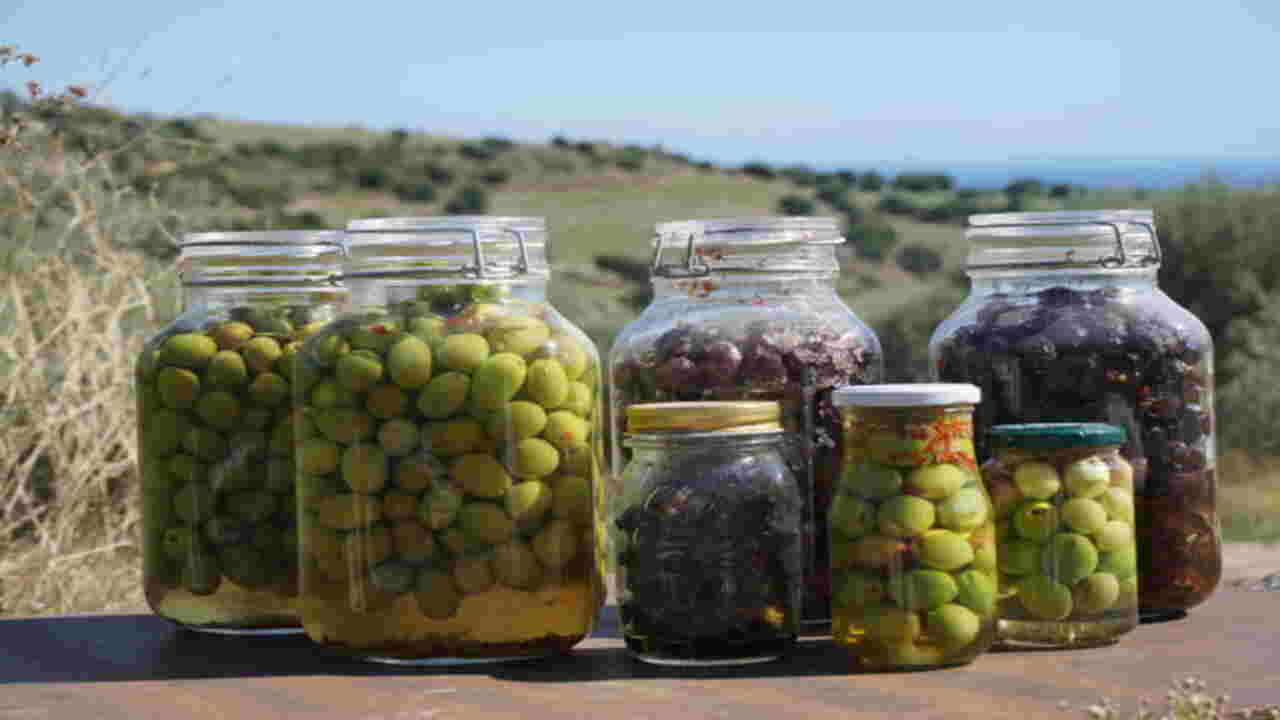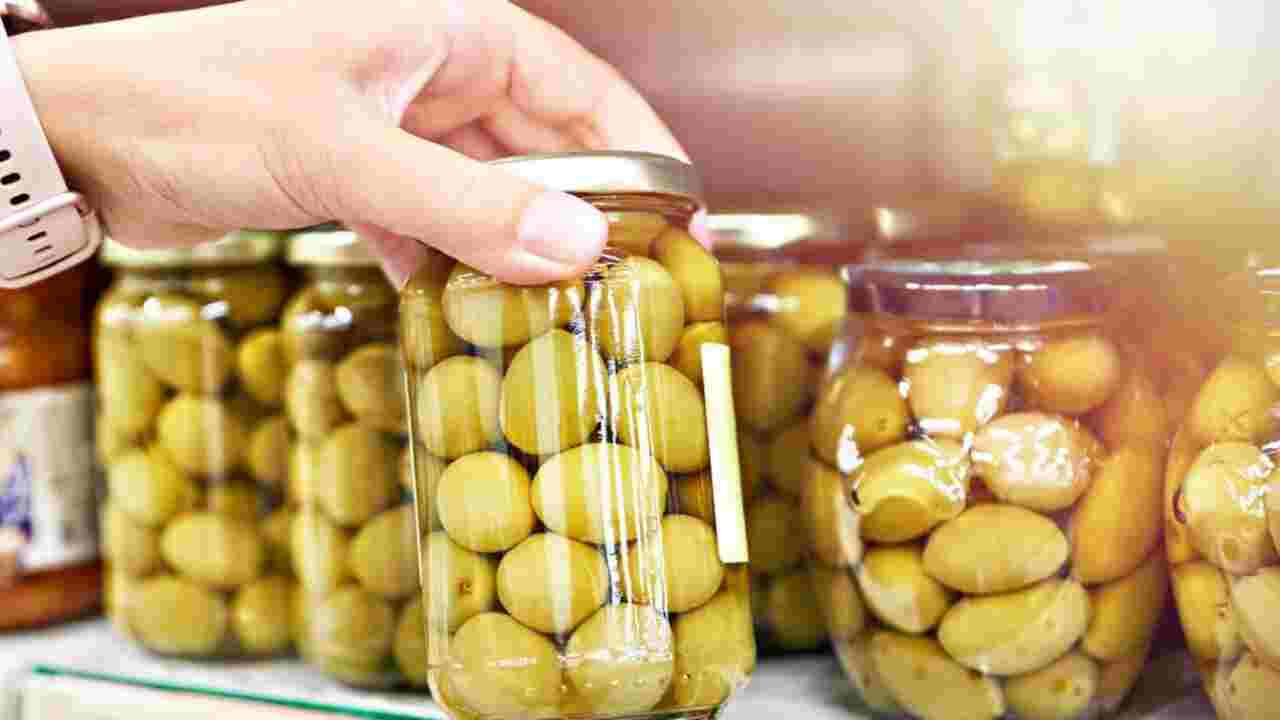Olives have been a staple of Mediterranean cuisine for centuries, prized for their rich and savoury flavour. Whether served as a garnish, in salads, or as a main dish ingredient, these small fruits have become a beloved part of many culinary traditions.
However, one may have noticed small white spots appearing on the surface of olives, which can be a cause for concern. These spots, while harmless, can affect the appearance and taste of the olive, leading many to question what causes them.
Here, we will explore the topic of olive production and investigate the causes of white spots on olives. So, for those curious about this phenomenon, continue reading to uncover the underlying reasons and develop a greater understanding of the olive.

Contents
- 1 What Causes White Spots On Olives? Know The Reasons!
- 1.1 Is It Safe To Eat Olives With White Spots?
- 1.2 How Do You Know If Olives Have Spoiled?
- 1.3 How To Get Rid Of White Spots On Olives
- 1.4 Should I Throw Away My Entire Olive Jar Because Of This Problem?
- 1.5 Tips For Selecting And Enjoying Fresh, High-Quality Olives
- 1.6 Frequently Asked Questions [ FAQs ]
- 1.7 What Is The White Residue On My Olives?
- 1.8 What Is The White Yeast On My Olives?
- 1.9 What Are The White Dots In My Olive Oil?
- 1.10 When Should You Not Eat Olives?
- 1.11 Can You Wash Mould Off Olives?
What Are These White Spots?
Various factors, including fungal infections, vitiligo, and eczema, can cause white spots on the skin. They can also show sun damage or a reaction to certain medications or chemicals.
If you notice white spots on your skin, it is important to consult with a dermatologist to determine the underlying cause and receive appropriate treatment.
No matter how careful you are, white spots will likely appear on your olives. However, as long as you take reasonable precautions, such as avoiding wetness, you should be able to enjoy your olives without worry. Antifungal medication can treat the fungus and prevent it from spreading.
If the white spot is severe, you may need to remove them surgically with a knife or scalpel. In the worst-case scenario, you may have to throw out the olives. So, be vigilant and take the necessary steps to ensure your olives stay healthy and delicious.
Assessing The Safety And Quality Of Olives With White Spots

Assessing the safety and quality of olives with white spots involves a visual examination by trained inspectors to identify any discolouration or irregularities. Laboratory analysis is then conducted to detect contaminants, pathogens, and chemical white residues.
This comprehensive evaluation process helps determine the causes and necessary actions to ensure the integrity of the product. Plants are living organisms that convert sunlight into energy through photosynthesis.
Brown spots on olives can be caused by a fungal infection known as anthracnose. Glass jars are commonly used for storing and preserving various food items, including olives. Coloured spots can refer to white spots on olives, which various factors can cause.
What Causes White Spots On Olives? Know The Reasons!

Fungal growth, bacterial infections, and environmental factors can cause white spots on olives. However, these spots are generally safe to eat and do not affect the taste or quality of the fruit. Virgin olive oil is popular for its rich flavour and smooth texture.
It is important to store and handle olives properly to prevent the growth of harmful bacteria. The white spots on olives are actually the natural wax coating that helps protect the fruit from insects.
Various factors, such as fungal infections or bacterial growth, can cause black spots on olives. Humidity and dry air can contribute to mould growth, so it’s essential to maintain proper storage conditions to avoid this issue. Here are some reasons that causes white spots on olives.
- Fungal infection
- Bacterial infection
- Sunburn
- Bruising or damage
- Chemical residues
- Immature or unripe olives
Is It Safe To Eat Olives With White Spots?

Generally, it is safe to eat olives with white spots because you can usually wash off the harmless yeast or mold spots. Olive oil from these olives may not negatively affect health, but some concerns remain.
Olives with white spots can be handy as feed for livestock due to their low protein, fat, and oil content, which prevents harmful bacteria growth. While they may lack nutrition, it’s important to note that olives typically have about 35% less nutrition than other.
Are Spotted Olives Dangerous?
Spotted olives, also known as diseased or blemished, can pose health risks. While not all spotted olives are necessarily dangerous, they can potentially indicate the presence of harmful bacteria or fungi.
Various factors, including mold, yeast, or bacterial infections, can cause the spots on olives. These contaminants can release toxins or cause spoilage, making the olives unfit for consumption. Ingesting spoiled olives can lead to food poisoning, resulting in symptoms such as nausea, vomiting, diarrhea, and stomach cramps.
It is important to note that not all spots on olives are necessarily harmful. Sometimes, the spots can be a natural occurrence or a harmless cosmetic blemish that does not affect the safety or taste of the olives. However, exercising caution and using your judgment when consuming olives with noticeable spots is always recommended.
How Do You Know If Olives Have Spoiled?

There are two ways to determine if olives have gone bad: their smell and taste. Fresh olives should not have a strong or unpleasant odour. They may have spoiled if you can smell them before taking a bite.
On the other hand, if they have no distinct smell or taste, they are safe to eat. Ripe olives have a unique aroma reminiscent of deep-ginger notes. Similarly, peaches may appear similar when viewed through their skin, but they should be yellowish-white once extracted.
It’s important to check for harmful bacteria like E. coli and Salmonella if there is a chance of spoilage, especially during high heat waves. Delicious olives are a popular and versatile ingredient in many Mediterranean dishes.
How To Get Rid Of White Spots On Olives
If you’ve ever opened a jar of olives and noticed white spots on them, don’t worry – you can easily resolve this common issue. These white spots are usually harmless yeast or bacteria that have formed on the surface of the olives.
Verticillium dahliae can cause white patches on olives. Simply rinse the olives in cold water and pat them dry with a clean towel to remove them.
- Soften olives in warm water and remove white spots
- Soak pitted olives in cool water multiple times a day
- Rinse olives under running water after removing stems and leaves
- Store olives away from sunlight to avoid browning and spoilage
Should I Throw Away My Entire Olive Jar Because Of This Problem?

If you’re having this problem with your jars, avoid throwing them out or keeping them for so long since you can still utilize the nutrients in lemon and olive fruit even if the crop has been spoiled. The brine covers green olives to prevent oxidation of freshness once severed from their tree, but these two do not share any nutritional value.
Also, if consumed together, they’ll only result in indigestion but have nothing near to nutrition. Therefore, you can use the rotten ones for compost or fertilizer, but canned olives will be better to consume. You don’t need to throw away every bad jar contaminated with it and never taste it again.
Tips For Selecting And Enjoying Fresh, High-Quality Olives

There are a few tips to remember regarding selecting and enjoying fresh, high-quality olives. First, look for olives that have a vibrant colour and a firm texture. Avoid olives that appear dull or have soft spots, which could indicate low quality or improper storage.
Secondly, consider the growth patterns of the olives. Ideally, you want to choose olives that have matured evenly, as this ensures a consistent flavour profile.
Finally, be cautious of signs of stunted growth, such as small or misshapen olives, as this could affect their taste and texture. By following these guidelines, you can ensure a delightful olive experience.
- Look for plump, shiny olives with vibrant colours.
- Choose firm olives that yield slightly when pressed.
- Ensure olives have a fresh, aromatic scent.
- Try different varieties of olives for varied flavours.
- Buy olives from reputable suppliers or speciality stores.
- Store olives in a jar with a tight lid and refrigerate after opening.
- Rinse olives before enjoying them to remove excess brine or oil.
- Use olives in salads, pasta dishes, or as a delicious snack.
- Pair olives with feta cheese or roasted flavours.
Final Thought
Environmental factors, like moisture or temperature, usually cause white spots on olives. The most common way to prevent them is to store your olives in a dark place. If that doesn’t work, you can use vinegar or lemon juice to prevent the white spots from forming.
If neither of these methods works, then you should definitely consider getting rid of the olives and starting fresh. The major cause of white spots on olives is the fruit fly.
Fruit flies are attracted to decaying fruits, and once they get inside, they lay their eggs. The larva from these eggs hatch into larvae that feed on the fruit’s flesh. We hope now you got it what causes white spots on olives.
Frequently Asked Questions [ FAQs ]
What Is The White Residue On My Olives?
The white residue on olives is most likely due to a natural fermentation process called “bloom.” This is caused by harmless yeasts and bacteria that can develop on the surface of the olives during their curing or pickling process.
What Is The White Yeast On My Olives?
The white yeast on your olives is most likely a type of harmless yeast called Candida oleophila. This yeast commonly forms a white, powdery coating on olives and other fruits. It is natural and does not pose any health risks.
What Are The White Dots In My Olive Oil?
The white dots in your olive oil could be solidified fats called stearin crystals. These crystals are a natural occurrence and do not affect the quality or taste of the oil. They can form when the oil is chilled or stored at cooler temperatures.
When Should You Not Eat Olives?
You should not eat olives if you have an allergy or sensitivity to them or if a medical professional has advised you to avoid them due to a specific health condition or medication interaction.
Can You Wash Mould Off Olives?
It is not recommended to wash mould off olives. Mould can penetrate the surface of olives, and washing may not effectively remove all the mould spores. Consuming mouldy olives can harm your health, as moulds can produce toxins.
